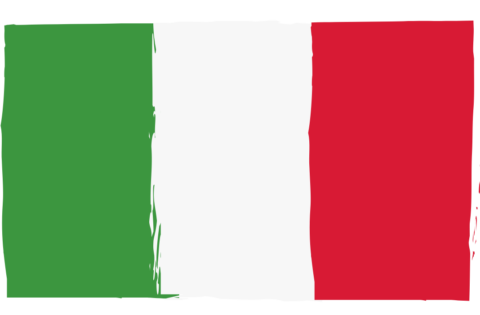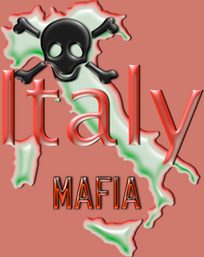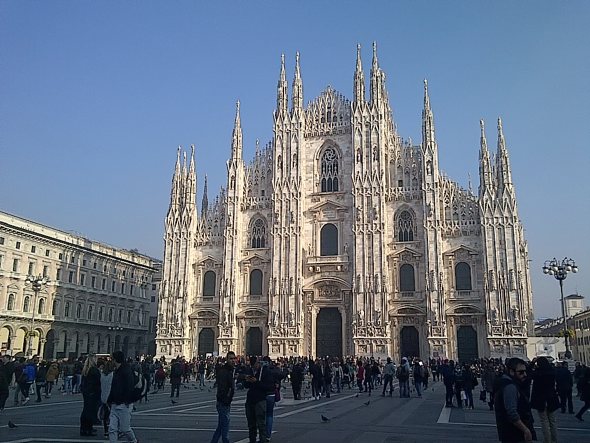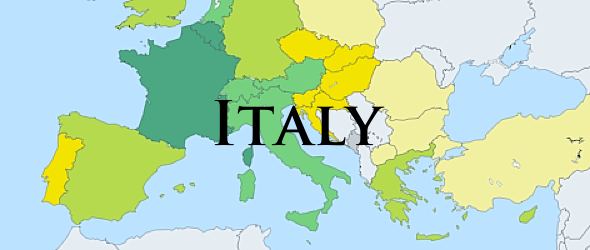Reading Roberto Saviano‘s book Gomorrah, which is an expose of the Camorra mafia which operates from Naples and its surrounding area, may provide some with an insight into the problems which beset modern day Italy.
So far I’ve read around seventy or so pages of Gomorrah, and it has been an eye opener, even if it is almost surreal.
For anyone who has lived in Italy for a few years, reading between the lines of Saviano‘s book, appears to supply many of the reasons behind the woes which affect many Italians in contemporary Italy.
How Real is the Situation Portrayed in Gomorrah?
Now, I don’t know just how accurate a portrayal of the Caomorra issue this book constitutes, but the sheer fact that Saviano is under permanent police protection and that he has received death threats from the very people he has written about, appears to suggest that much of what he has written is true.
As a matter of interest, I showed my copy of Gomorrah to a group of students of mine, and the reaction was interesting.
One chap was surprised that it had been translated into in English and another thought that the book painted most of Italy’s southerners in a very poor light and stated that not everyone in the south of Italy is under the mafia umbrella. One other fellow, who had read the book, confirmed that Saviano’s account is accurate.
This young man was from the south of Italy, so he probably had some personal knowledge of what is going on in his neck of the Italian woods. The name of Andreotti came up in the ensuing conversation and it was insinuated that this Italian politician is possibly a mafia godfather. I had heard similar comments on senator Andreotti’s, aka Beelzebub to his opponents, alleged mafia connections before.
Saviano’s Family Connections
Someone, not one of my students, told me that Roberto Saviano is the cousin of one of the families involved in the running of sections of the Camorra in Naples, hence his extensive knowledge of what was, and is still, going on in the Naples area in Italy. This is also why the Camorra is gunning for Saviano – he is regarded as being a traitor. Which, as I have stated, is further evidence that Saviano’s work is not fictional.
Mafia Influence on Italy’s Economy?
From what I’ve understood, and I should perhaps point out that I’m reading an English translation of Gomorrah, the business enterprises of the Naples mafia have penetrated so deeply into the economy of Italy, that they have had a profound effect on the economics of the country.
Actually in view of the information in the book, Camorra business practices have probably not only caused an imbalance in the economics of Italy, but in of many areas of the world, including most of Europe, and parts of the USA including the states of Texas and Florida.
Mafia Corporations are Not Normal Corporations
Normally businesses have to factor in things like taxes, pensions, and social security contributions, not to mention other standard expenses associated with running a legitimate business. However, the Camorra are, depending on your point of view, operating either way above or deep below the free market. Rather, they have created their own market.
Such is the enterprise of the Camorra businessmen that they have probably managed to keep salaries in the rest of Italy artificially low for a many people for many years, including those of a lot of the young graduates I teach at one of Italy’s major business schools.
That these students often accept positions as unpaid interns could well be down to the effects of the Naples Camorra. I’ll explain why.
According to Saviano, the Camorra operates units making designer clothes, both for the big Italian fashion houses, and for themselves. The people working in these factories are not well paid, nor do they pay taxes, and as for pension contributions, forget it.

Stop reading, start speaking
Stop translating in your head and start speaking Italian for real with the only audio course that prompt you to speak.
The materials used in these unregulated production units are not subject to import duties or excessive transport costs either. The businesses are also heavily subsidised by income from other illicit dealings including vast and highly profitable drug distribution and dealing networks.
Seeing as production costs are minimal, the Camorra can afford to offer its goods at prices which legitimate businesses just cannot match. Indeed, it is probable that Camorra operated enterprises affect the Italian market to the extent that they force many Italian companies to operate at very tight margins, which leads, in turn, to reduced profitability, and ultimately to Italy’s low salary levels, and starvation pay for Italy’s interns. Legitimate companies working in certain sectors cannot compete with the ultra efficient Camorra zero tax strategy.
A collateral effect of this of course, is that when a, legitimate, company discovers that another business is paying it’s drivers, for example, 1000 Euros a month, then it too will not offer salaries which are any higher, regardless of whether such business could or not.
The Mafia’s Influence Runs Deep
The effects of artificial mafia economics may penetrate yet more deeply into the fabric of the Italian system, in that the prices the Camorra charge may mean that other Italian businesses feel they are forced to keep tax liabilities at a minimum, usually through intricate book cooking, complex offshore schemes, and the Chinese boxes for which many large Italian enterprises are infamous.
As a consequence of artificially low tax income, the Italian government has been forced to keep tax levels high, in the vain hope that they can obtain greater income from tax payments.
The contributions generated by Italy’s high tax levels (73.3% total tax on profits) probably only equate to the same amounts that are received by governments in countries where tax rates are at around 40% or 50%. The reason for this odd situation in Italy is that Italians tend to declare incomes which are much lower than reality.
Don’t blame Italians for their tax under-declarations though, many are probably forced to do this in order to keep themselves and their businesses above water in the face of ‘mafiaconomics’.
Other Sources of Mafia Income
Remember too that literally billions in payments have been made to the impoverished south of Italy over the years, but much of this has found its way into the pockets of the mafia entrepreneurs, further diminishing the ability of legitimate Italian businesses to compete.
The Effects of Mafiaconomics on Europe
It’s not only Italian businesses which may have been affected by the mighty mafia business machine, for many businesses throughout Europe would have found it difficult to compete with the low prices of goods ‘made in Italy’ by organisations operating beyond the hindrances of normal business rules.
You may not know it, but mafiaconomics probably made digital cameras more affordable, may have put designer clothes in your wardrobes, and have helped build major brands in the Italian fashion industry. But before you dash off to check the quality of those Gucci jeans, don’t bother, you will find it is identical to the real thing. They are ‘real fakes’ in Roberto Saviano’s words. Indeed, so real are these fakes, that apparently one Angelina Jolie wore an outfit of Camorra origins to a flash Hollywood function.
The mention of Hollywood in Saviano’s work is an indication of the sheer scale of the Camorra’s business holdings, not to mention the turnover. It’s a real business organisation too, complete with strategic alliances, joint ventures, hostile takeovers and, more sinisterly, the literal elimination of competition.
To find out more on how Italy’s Camorra may be influencing the world economy, I thoroughly recommend reading Roberto Saviano‘s book Gomorrah (Link to Amazon US, should you wish to order this tome). And as I’ve pointed out, I’ve read 70 pages. Only 230 pages to go!
Read this book and you will see Italy in a new light. A dark light.
UPDATE: 30 January 2009
Mafia business ‘equal’ to 9% of GDP – Article on Ansa – Mafiaconomics is quite a force!





